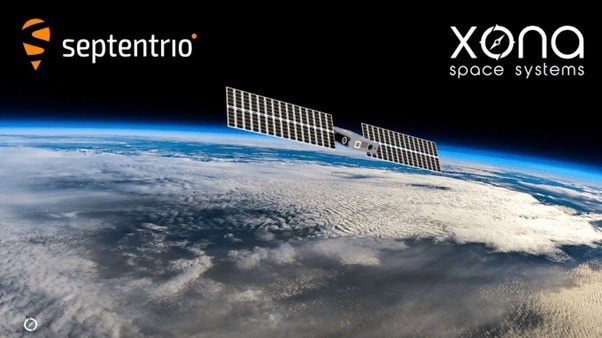Septentrio, a leader in high-precision GNSS solutions, has been collaborating with Xona Space Systems to develop an experimental receiver which is compatible with Xona multi-frequency PULSAR™ signals. This multi-frequency receiver that supports Xona’s ground breaking LEO PNT signals, will be one of the first to decode all PULSAR™ signals in parallel with other standard GNSS signals. This makes it ideal for testing Xona’s upcoming LEO-PNT constellation in a simulated environment, since live signals are not yet available.

Image Credit: Septentrio
Xona Space Systems is pioneering the next generation of space-based PNT (Positioning, Navigation, and Timing) to answer the need for more secure, accurate, and robust services. The PULSAR™ system will consist of 260 LEO satellites orbiting the Earth 25 times closer than GPS satellites. The higher signal power resulting from closer proximity to Earth and the modernized signal design provide opportunities for better multipath mitigation and higher accuracy, as well as increased interference and spoofing protection. High accuracy and resilient operation are also the main pillars on which Septentrio has built their PNT receivers over the last two decades, providing reliable positioning and timing solutions to critical infrastructure and industrial applications such as precision agriculture, construction, robotics and much more.
“We are thrilled to welcome Septentrio to the PULSAR ecosystem,” said Bryan Chan, VP of Business Development and Strategy. “Septentrio is well-known as an industry leader in developing high-quality and resilient GNSS products. As Xona PULSAR signals become available, a Septentrio receiver will offer users an opportunity to be the first to experiment with PULSAR and GNSS in many different scenarios.”
“We are excited to collaborate with Xona Space Systems during this new era for PNT technology. After our deep involvement in various expansions of the GNSS ecosystem, most notably Galileo for receivers of both reference networks and user applications, it is exciting to leverage our experience in the next phase of space-based PNT, which has opened up with LEO-PNT,” said Jan Van Hees, Business Development Director at Septentrio.
Septentrio will be exhibiting their new experimental PULSAR™ reference receiver as well as other high-accuracy GNSS and GNSS/INS receivers in booth 219 at the ION Joint Navigation Conference, taking place in San Diego, California from 12-15 of June 2023. If you would like more information about the PULSAR™ enabled receiver or other products from Septentrio don’t hesitate to contact the Septentrio team.